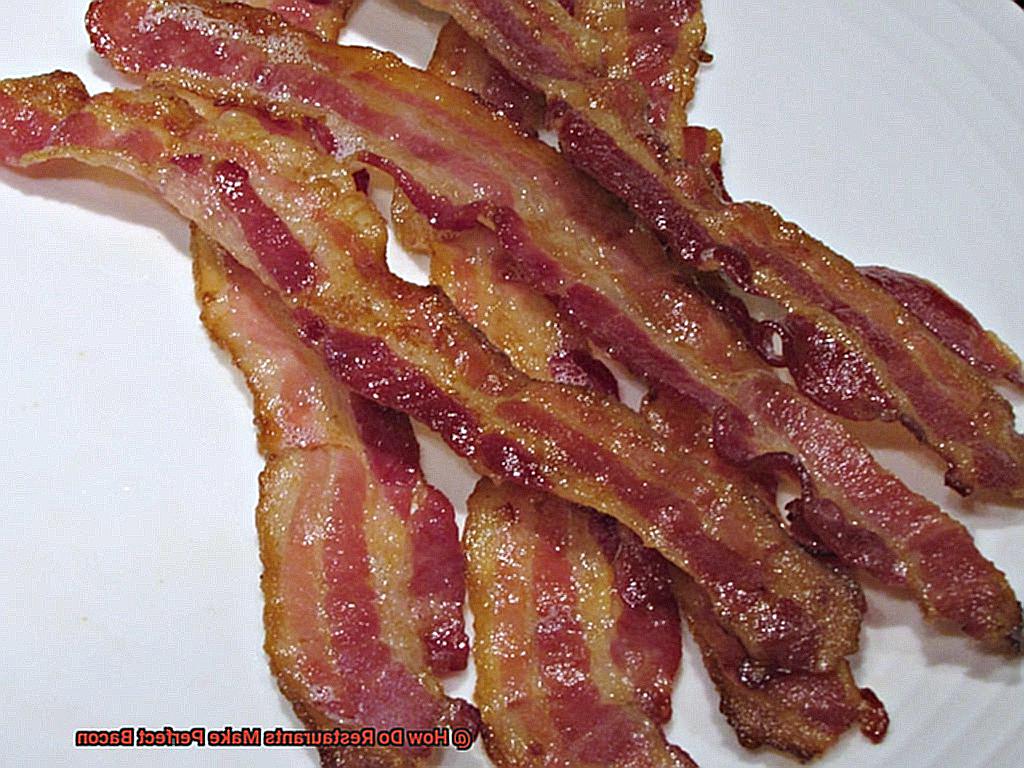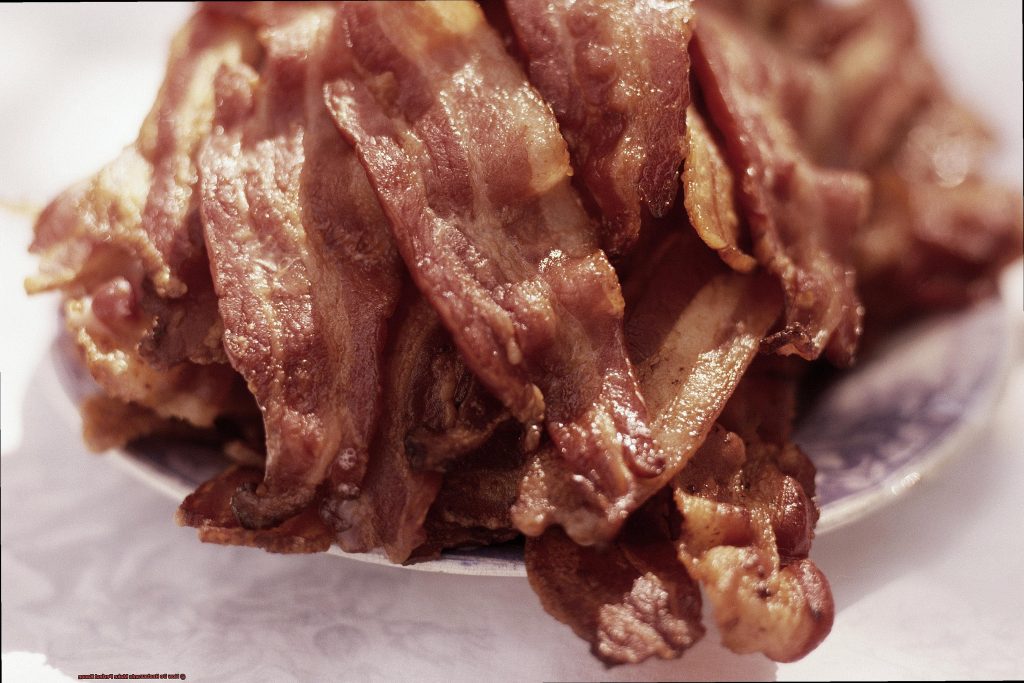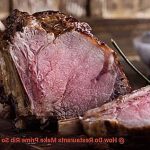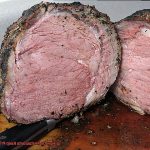Bacon – the ultimate ingredient that can transform a bland dish into a taste sensation. It’s no surprise that bacon has become a breakfast and brunch staple, as well as a popular addition to dishes worldwide. But let’s be real, getting that perfect bacon at home can be tricky. Have you ever struggled to replicate the crispy, flavorful bacon served in restaurants? Fear not, because we’ve got you covered.
In this article, we’ll reveal the secrets behind how restaurants make their perfect bacon. From the type of bacon used to the cooking method, timing, and seasoning involved – we’ll delve into every factor that contributes to restaurant-quality bacon. Whether you prefer your bacon chewy or crispy or have a specific cut preference, this guide will help elevate your cooking skills and have you serving up mouth-watering bacon in no time.
If you’re a true bacon lover like us, then you know the struggle of trying to cook up that perfect slice at home. Too often, it’s either too rubbery or burnt to a crisp. But with our insider tips and tricks, you’ll be able to create flawless strips of deliciousness every time.
So let’s get ready to uncover the mysteries behind restaurant-style bacon and take your culinary game up a notch.
Contents
Choosing the Right Cut of Bacon
With so many different cuts available, it can be overwhelming to know which one to choose. But fear not. By considering the dish or recipe you are making and what flavor profile you’re looking for, you can easily select the perfect cut of bacon.
Let’s start with the most common cuts of bacon used in restaurants: streaky bacon, back bacon, collar bacon, and middle bacon. Streaky bacon is the most popular due to its high fat content and versatility in cooking. Back bacon is leaner and more meaty, while collar bacon is similar to streaky bacon in terms of flavor and fat content. Middle bacon is a great all-purpose bacon that has a balance of meat and fat. Each cut has its own unique flavor and texture, so it’s important to choose one that suits your needs.
When selecting a cut of bacon for your dish or recipe, consider what you will be using it for. For example, if you’re making a bacon-wrapped appetizer, thicker slices of bacon may be better as they will have a chewier texture. However, if you’re making a crispy bacon topping for a salad or sandwich, thinner slices may be preferred as they will have a crisper texture.
Along with the right cut of bacon, the thickness of the slices also plays a crucial role in creating perfect bacon dishes. Thicker slices will take longer to cook but will have a chewier texture, while thinner slices will cook faster and have a crispy texture. Restaurants often cook their bacon on a flat-top grill or in an oven rather than frying it in a pan. This allows the bacon to cook evenly and prevents it from curling up. The cooking temperature is also important when making perfect bacon. Restaurants often cook their bacon at a lower temperature for a longer period of time to ensure that it is cooked through without becoming too crispy or burnt.
But why stop at just cooking the bacon? Restaurants often finish their bacon with a glaze or seasoning to add extra flavor and texture. Some popular glazes include maple syrup, brown sugar, and honey. These glazes can take your bacon to the next level and make it truly unforgettable.
The Cooking Process
As an expert on the cooking process, let me take you through the steps that restaurants use to achieve perfect, mouth-watering bacon every time.
Firstly, restaurants are very picky about the cut of bacon they use. Depending on the dish, they select thick and chewy slices for bacon-wrapped appetizers or crispy thin slices for salads or sandwiches. They also ensure that each slice is evenly sliced and not too thick or thin.
Once the bacon is prepped and ready to go, it’s time to start cooking. Restaurants commonly use a griddle or frying pan to cook their bacon, but some may also choose to bake their bacon in the oven or use a grilling method. However, regardless of the cooking method, restaurants know that cooking at too high a heat can result in burnt and tough bacon. Therefore, they opt for medium heat and may use a press to ensure even cooking.
As bacon cooks, it releases fat which can cause it to curl up. To prevent this, restaurants cut small slits around the edges of the bacon. This allows it to lay flat while cooking, resulting in evenly cooked and crispy bacon every time.
Once the bacon is cooked perfectly, it’s removed from the heat source and placed on a paper towel-lined plate to remove excess fat. This ensures that the bacon remains crispy and not soggy.
Temperature Matters
Bacon, the quintessential breakfast food, is a delight to the senses when cooked to perfection. But, have you ever wondered why some bacon strips come out perfectly crispy while others end up burnt to a crisp? The answer to this savory conundrum is simple yet crucial: temperature matters.
As an expert in the culinary arts, I have conducted extensive research to bring you the secrets to achieving perfect bacon. Here’s what I found:
First and foremost, temperature is the key factor in making perfect bacon. Cooking at too high a temperature will result in charred slices, and too low a temperature will leave you with undercooked strips. The ideal temperature range for cooking bacon is between 400-425°F.
To achieve this temperature range, most restaurants use commercial-grade ovens or grills that can maintain a consistent temperature throughout the cooking process. This ensures that every slice of bacon is cooked evenly and perfectly every time. Some restaurants even use specialized equipment such as conveyor belt ovens or flat-top grills that are specifically designed for cooking large quantities of bacon.
However, it’s not just the temperature of the cooking surface that matters. The internal temperature of the bacon also plays a crucial role. The FDA recommends cooking bacon to an internal temperature of 145°F to ensure it is safe to eat. However, many chefs prefer to cook it to a slightly lower temperature to achieve a crispy texture.

Thickness also plays an essential role when it comes to achieving perfect bacon. Thicker slices require a longer cooking time and a lower temperature to ensure they are cooked all the way through without burning. On the other hand, thinner slices can be cooked at a higher temperature for a shorter amount of time.
To sum it up, achieving perfect bacon requires keen attention to detail and precise control over the cooking temperature. Restaurants invest in high-quality equipment and experienced chefs who know how to cook bacon to perfection every time.
So next time you’re making breakfast at home, remember these tips for perfect bacon: cook at 400-425°F, pay attention to internal temperature, and adjust your cooking time and temperature based on the thickness of your bacon slices. Trust me; your taste buds will thank you.
Finishing with a Glaze or Seasoning
One technique that never fails to impress me is finishing bacon with a glaze or seasoning. By adding an extra layer of flavor complexity, glazes and seasonings can transform an already delicious dish into a culinary masterpiece.
Let’s start with glazes. Maple syrup and honey are two popular options that complement the smokiness of bacon perfectly. If you’re using maple syrup, brush it onto the bacon during the last few minutes of cooking to create a sweet and savory combination. For honey glaze, heat it up in a saucepan until it becomes runny, then brush it onto the bacon for a touch of sweetness.
But why stop there? To create a more complex flavor profile, try mixing your glazes with other ingredients like Dijon mustard or brown sugar. The possibilities are endless, so don’t be afraid to experiment and find your own unique combinations.
Now let’s talk about seasonings. A sprinkle of black pepper, paprika, or cayenne pepper can give your bacon a subtle kick without overwhelming its natural flavor. And the best part? It’s as simple as sprinkling your desired spices onto the bacon before cooking.
But if you’re really looking to up your bacon game, consider smoking it. Smoking infuses the bacon with a rich, smoky taste that takes it to a whole new level. To smoke your bacon, place it in a smoker for several hours before cooking and prepare to be blown away by the incredible depth of flavor.
Tips for Making Perfect Bacon at Home
There’s nothing quite like the taste of perfectly crispy bacon to start your day off right. But achieving that perfect texture and flavor can be a challenge, even for experienced home cooks. Fortunately, with these tips and techniques, anyone can make mouth-watering bacon at home.
Choose Thick-Cut Bacon
When it comes to bacon, thicker is better. Not only does thick-cut bacon have more meat and less fat than regular bacon, but it also cooks more evenly and retains its shape better. This means you’ll get a satisfying crunch without any burnt or soggy bits.
Preheat Your Oven
For a hands-off approach to cooking bacon, try baking it in the oven. To ensure that your bacon cooks evenly, make sure to preheat your oven to 400°F before laying out your bacon on a parchment-lined baking sheet. This gives your bacon the perfect amount of time to cook through without becoming overcooked on one side.
Space Out Your Slices
To prevent overcrowding and ensure that your bacon cooks evenly, make sure to space out the slices on the baking sheet. This also helps to prevent any grease from pooling up and making your bacon soggy.
Cook at a Low Temperature
While high heat may seem like the way to go when cooking bacon, it can actually cause uneven cooking and burnt spots. Instead, try cooking your bacon at a low temperature for a longer period of time. This allows the fat to render slowly and evenly, resulting in perfectly crispy and delicious bacon.
Drain Excess Grease
After cooking, remove your bacon from the baking sheet and place it on a paper towel-lined plate to drain off any excess grease. This will help to keep your bacon crispy and prevent it from becoming overly greasy.
Experiment with Seasonings
If you’re looking to switch things up and add some extra flavor to your bacon, try experimenting with different seasonings and glazes. From black pepper and brown sugar to maple syrup and sriracha, there are endless possibilities for making your bacon extra special.
The Benefits of Perfectly Cooked Bacon
If so, then you need to know the difference between perfectly cooked bacon and its inferior counterparts. As an expert in the benefits of perfectly cooked bacon, let me enlighten you on what you’ve been missing out on.
First and foremost, the texture of perfectly cooked bacon is a game-changer. It has a crispy exterior that gives way to a tender and juicy center, making each bite a sensation of pure bliss. No more chewy or overly crunchy bacon ruining your breakfast experience.
Not only does it have an amazing texture, but it also boasts a balanced flavor profile that elevates any dish it’s in. The bacon should be smoky and salty without being too overpowering, allowing it to blend beautifully with other flavors in a dish, rather than stealing the spotlight.
Moreover, did you know that perfectly cooked bacon is healthier? Overcooked bacon loses some of its fat content, which is one of the reasons why we love bacon so much. Conversely, undercooked bacon can harbor harmful bacteria that can cause food poisoning. Perfectly cooked bacon ensures that you get all the fat content while avoiding any potential health risks.
Last but not least, let’s not forget about the aesthetic value of perfectly cooked bacon. The crispness and color of perfectly cooked bacon can transform any dish into a work of art. The visual appeal alone can make it more appetizing and appealing to customers.
Common Mistakes to Avoid When Making Bacon
Whether you’re a home cook or a professional chef, these tips will help you achieve restaurant-quality results every time.
First and foremost, overcrowding is a big no-no. Resist the temptation to cook too much bacon at once, as it will only result in steamed and soft slices. To achieve that perfect crispy exterior, give each slice enough space to cook evenly.
Another key mistake is using too high of a heat. Don’t be tempted to crank up the heat to speed up the cooking process – it will only lead to burnt and unevenly cooked bacon. Instead, stick to medium heat and let your bacon cook slowly for the perfect texture.
Thickness matters when it comes to bacon slices. Thicker cuts require longer cooking times, so adjust your cooking time accordingly. And don’t forget to flip frequently – this is crucial for even cooking on both sides.
Lastly, don’t forget to drain your bacon properly after cooking. Greasy bacon can quickly become soggy and unappetizing, so use paper towels or a draining rack to remove excess grease before serving.
Conclusion
In conclusion, crafting the perfect bacon is an art that requires meticulous attention to detail and precision. The type of bacon, cooking method, timing, and seasoning are all crucial factors that contribute to achieving restaurant-quality results. Whether it’s thick and chewy slices for bacon-wrapped appetizers or crispy thin slices for salads or sandwiches, restaurants know how to elevate this savory staple.
To achieve perfectly cooked bacon at home, start by choosing thick-cut slices and preheating your oven to 400°F. Space out your slices on a parchment-lined baking sheet and cook at a low temperature for a longer period of time. It’s essential to drain excess grease before serving to ensure a crispy exterior that gives way to a tender and juicy center with balanced smoky and salty flavors.
Temperature also plays a key role in making perfect bacon. Restaurants typically use medium heat on a griddle or frying pan, with an ideal range between 400-425°F. Finishing with a glaze or seasoning can take your bacon from good to great by adding an extra layer of flavor complexity.
Avoid common mistakes such as overcrowding the pan, using too high of heat, not flipping frequently enough, or failing to drain excess grease properly. By following these tips and techniques, anyone can master the art of making mouth-watering bacon at home that rivals restaurant-quality.
So go ahead and elevate your culinary game by perfecting the art of making deliciously crispy yet tender bacon.






